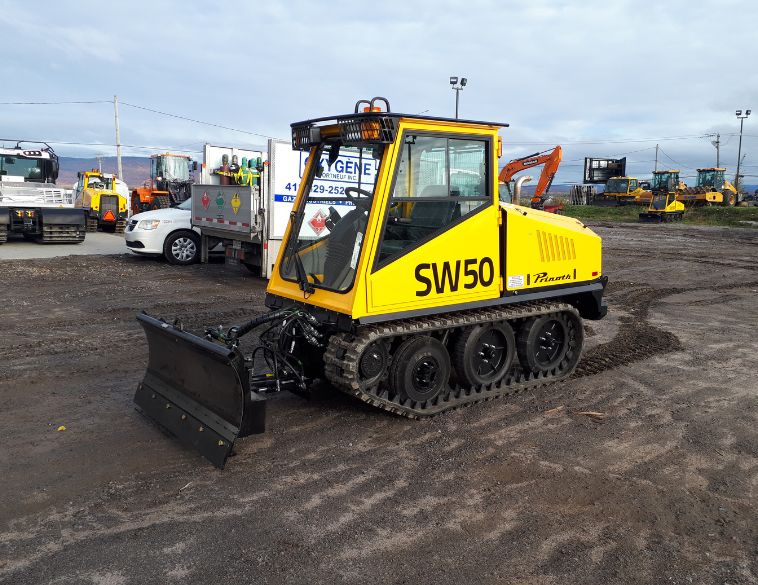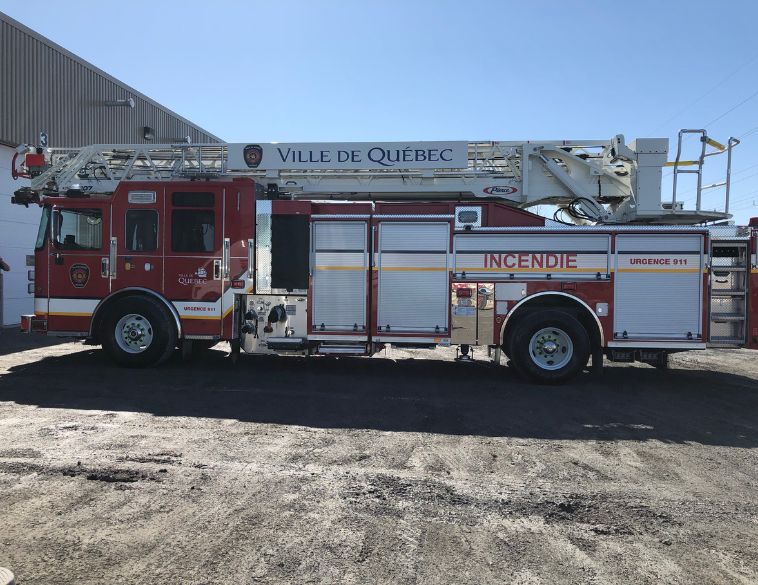Quebec City stands out for the modern management of its fleet and its constant move towards best practice: integration of new performance indicators, efforts to standardize, reorganization of the maintenance department to make up for the shortage of mechanics, tens of thousands of hours of training and electrification efforts.
Raoul Pascal, Director of the Motorized Equipment Management Department at Quebec City, manages a “very versatile and very heterogeneous” department comprising 3,254 pieces of equipment.
“We also look after the equipment and appliances that can be attached to the vehicles, such as trailers, compressors and mobile generators.”
Performance indicators
A new dashboard gives managers a complete picture of how vehicles are being used and the trends that emerge. The three key indicators are:
- the number of vehicles in operation
- the cost of external maintenance work
- petrol and diesel consumption
“Thanks to these indicators, we can see how the fleet is performing on a day-to-day basis: the vehicles that are put into service, the distribution of vehicles, the status of equipment, the number of external jobs carried out in the last month, as well as a monthly comparison of the last three years to see trends,” explains Pascal.
Given that vehicle maintenance is carried out in-house, another indicator will be added to the dashboard shortly: the time between repairs.
“We are in the process of setting up indicators to determine the average time between breakdowns. This will enable us to measure the level of equipment reliability and eventually move from preventive to predictive maintenance.”
Standardization efforts

For Pascal, standardizing the practices of the various municipalities in Quebec is a strategic issue. To this end, it has taken the initiative of sharing these practices with a number of municipalities and the Union des municipalités du Québec (UMQ).
“At municipal level, when it comes to fleet management, nothing exists to standardize the way we do things. And yet, whether in Montreal or Gatineau, our activities are similar. Our vision and ambition is to standardize municipal fleet operations, regardless of regional differences.”
Standardization is also a way of managing public funds more efficiently.
“Standardization necessarily means time savings of up to 15% or more per month. If we optimize and standardize our operations, we’ll be able to do more or better in less time.”
Québec’s efforts to standardize also extend to parts and inventories.
“The more varieties I have, the more inventory I have, so the more money I have lying idle. Also, the more standardized our operations, the more time we save on repairs. There’s still work to be done, but that’s the direction we’re heading in.”
Coping with the shortage of mechanics
Most vehicle maintenance and repair work is carried out in-house by some 80 mechanics, whose work is essential to the fulfillment of a fleet’s mission.
Faced with a shortage of this specialized workforce, difficult decisions were taken to optimize operations.
“Last year, I had to close two repair workshops to repatriate mechanics to other locations. The labour shortage is forcing us to optimize our operations, so we’ve reduced the number of workshops from 8 to 6, reviewed our operating methods and we’re not finished yet.”

Thousands of hours of training for users
The director proudly points out that more than 10,500 hours of training have been given to users of the vehicles in the Quebec City fleet. In 2023, a total of 1,543 people qualified thanks to a wide range of training courses on different vehicles and equipment.
“Training has a positive impact on the quality of services provided to the public and enables us to respond effectively to the needs of our internal partners.”
Electrification: a cautious transition
By the end of the year, 6.5% of Quebec City’s fleet should be electrified. Faced with the difficulty of obtaining electric vehicles, the director and his team are concentrating on raising users’ awareness of these new issues.
“At the moment, our efforts are focused on raising awareness among partners, because operators on the road have fears about using EVs. Our aim is to move towards the smoothest possible integration, so yes, it’s a challenge!”



